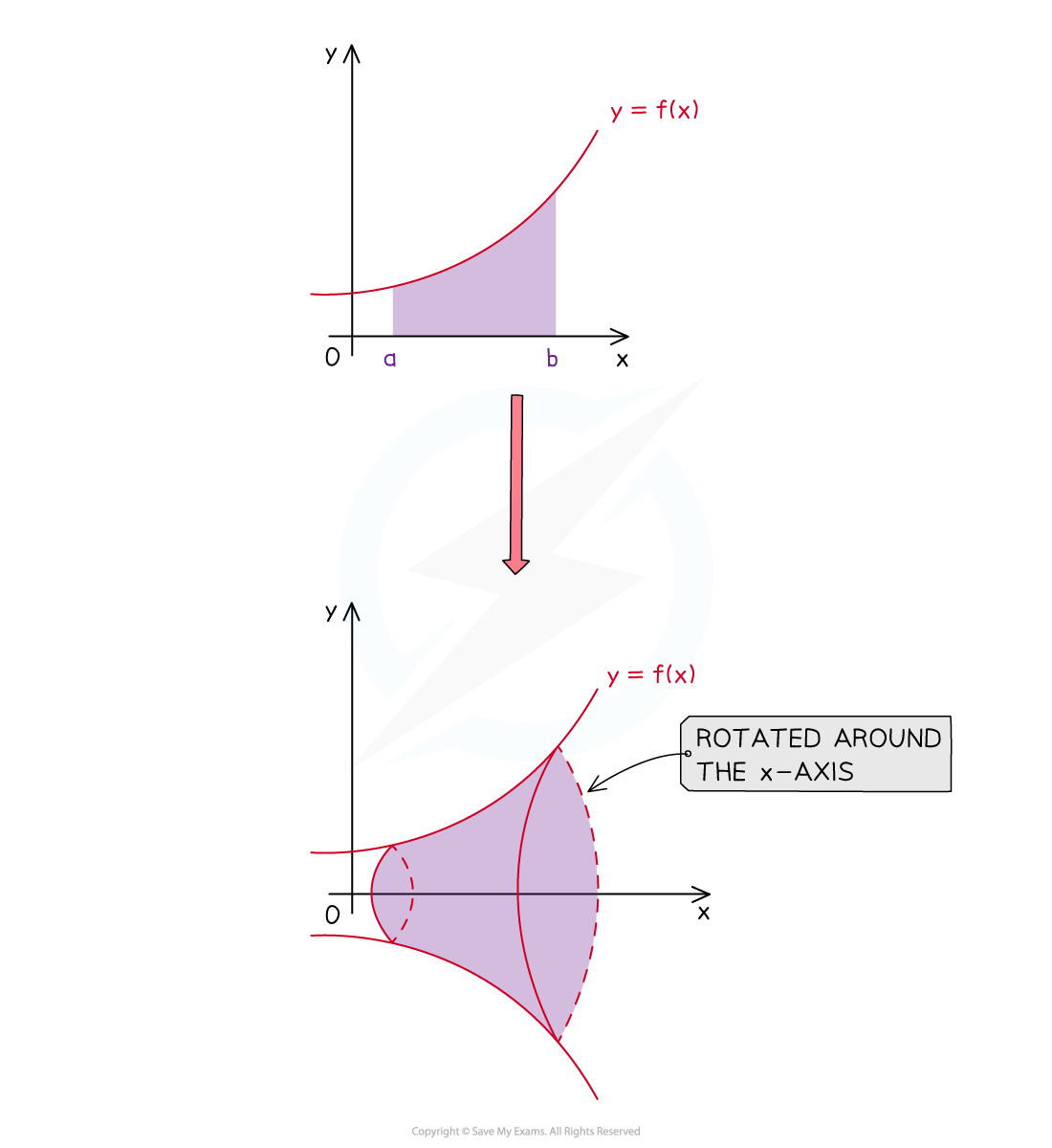Volumes of Revolution (Edexcel IGCSE Further Pure Maths) : Revision Note
Volumes of Revolution About the x-axis
What is a volume of revolution about the x-axis?
A solid of revolution is formed
when an area bounded by a function
and the lines
and
is rotated
radians
about the
-axis
The volume of revolution is the volume of this solid

Be careful – the ’front’ and ‘back’ of this solid are flat
they were created from straight (vertical) lines
3D sketches can be misleading!
What is the formula for a volume of revolution about the x-axis?
The volume of revolution of a solid rotated radians (
) about the
-axis between
and
is given by:
This is not given on the exam formula sheet, so you need to remember it
Note that
is the area of the circular cross-section of the solid at any value of
That might help you remember the form of the volume integral
is a function of
i.e.
and
are the equations of the (vertical) lines bounding the area
(
is the 'left boundary' and
is the 'right boundary')
and
may be given in the question
one boundary may be the
-axis (
)
the
-axis intercepts of
may also be boundaries
How do I calculate the volume of revolution about the x-axis?
STEP 1
Identify the limitsand
These may be given in the question
or be indicated on a graph in the question
Sketching the graph of
can help if the graph is not provided
STEP 2
Square the functione.g.
or
STEP 3
Evaluate the integral in the volume formulaAn answer may be required in exact form
i.e. as a multiple of
Examiner Tips and Tricks
Don't panic if
involves a square root
The square root will disappear when you find
Don't forget to bring
back in after working out the integral
In my experience that is a very common student error
Worked Example
Find the volume of the solid of revolution formed by rotating the region bounded by the graph of , the coordinate axes and the line
by
radians about the
-axis. Give your answer as an exact value.
Start by finding the values of and
for the formula
'Bounded by the coordinate axes' tells us that the -axis (
) is one boundary
The question tells us that is the other one
So and
If in doubt, drawing a sketch can help

Now square the function
Substitute everything into
Work out the definite integral
Put that value back into the volume formula
Don't forget to include the !
The question asks for an exact value answer, so leave the answer in terms of
Volume

You've read 0 of your 5 free revision notes this week
Unlock more, it's free!
Did this page help you?

